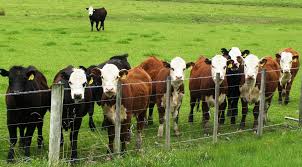
By Michelle Innis
From the New York Times
You can get more information at their websiSYDNEY, Australia — Australia is close to signing an agreement to ship live cattle to China, opening up a significant market for producers, who said exports could grow to one million animals a year, driven by demand there for fresh beef.
The agreement could eventually result in a doubling of Australia’s export volumes for live cattle. It is likely to increase competition for beef and help lift prices, both in the domestic market and among other buyers of the country’s live cattle, including Indonesia and Vietnam, producers said.
“We are on the cusp of a new major announcement for the Australian beef industry,” Agriculture Minister Barnaby Joyce told reporters Friday in Tamworth, an agricultural center north of Sydney. He said that quarantine officials in Australia and China had worked for about 10 years on the export agreement and that the deal was separate from a trade agreement that is in the final round of negotiations between the two countries.
Alison Penfold, chief executive of the Australian Livestock Exporters’ Council, said that industry and government officials had worked intensively on the agreement over the past 12 months. Completion of the deal rests with the Chinese General Administration of Quality Supervision, Inspection and Quarantine. The final hurdles involve Australia’s meeting health protocols commonly applied to live exports, including disease-free cattle, testing, quarantine periods and treatment for parasites like ticks, Ms. Penfold said.
“This is obviously a big market signal,” Mr. Joyce said. He added: “You’re about to be paying more for cattle, and this is good,” referring to producers’ hopes that the price of beef would rise from around two Australian dollars a kilogram — a bit less than $0.80 a pound — to above 3 Australian dollars, as demand for exports squeezes prices higher in domestic and existing offshore markets.
David Warriner, president of the Northern Territory Cattlemen’s Association, said that if producers achieved 3 Australian dollars a kilogram, then “the price is high enough to allow cattlemen to increase productivity,” and that there would be no threat to the supply to existing offshore buyers.
Australia exports about 1.13 million cattle a year, worth about $860 million, to Indonesia, Vietnam and Israel, and an agreement was recently reached with Cambodia. Mr. Warriner cautioned that the exports to China would build slowly and take some time to reach one million.
Exporters were more upbeat. “Our biggest market is Indonesia,” said Mauro Balzarini, owner of Australia’s largest privately owned cattle exporting company, Wellard, which buys and ships about 400,000 head of cattle mostly to Indonesia and Vietnam each year. “We hope once the market in China opens up, we won’t just export live cattle, but we will have joint ventures as well for processing, in places like Beijing.”
The potential in China is significant, said Troy Setter, the chief executive of the Consolidated Pastoral Company, which manages 390,000 head of cattle across almost 10 million acres of grazing land in the Northern Territory, Queensland and Western Australia. The company exports about 80,000 head of cattle annually, 80 percent to Indonesia, where it also runs two cattle feed lots, and the remainder to Vietnam.
“The devil is in the detail when it comes to the health protocol,” Mr. Setter said. “We expect it to be similar to other export agreements for live cattle. China is a massive market, where we estimate 40 to 45 million head of cattle are eaten each year.”
Ms. Penfold, leader of the exporters’ group, said that all animals exported from Australia were closely tracked and that there were strict regulations about their welfare before export, during shipping and even after they landed in a foreign country. The regulations were tightened after export bans were imposed after accusations of cruelty in some Indonesian slaughterhouses.
